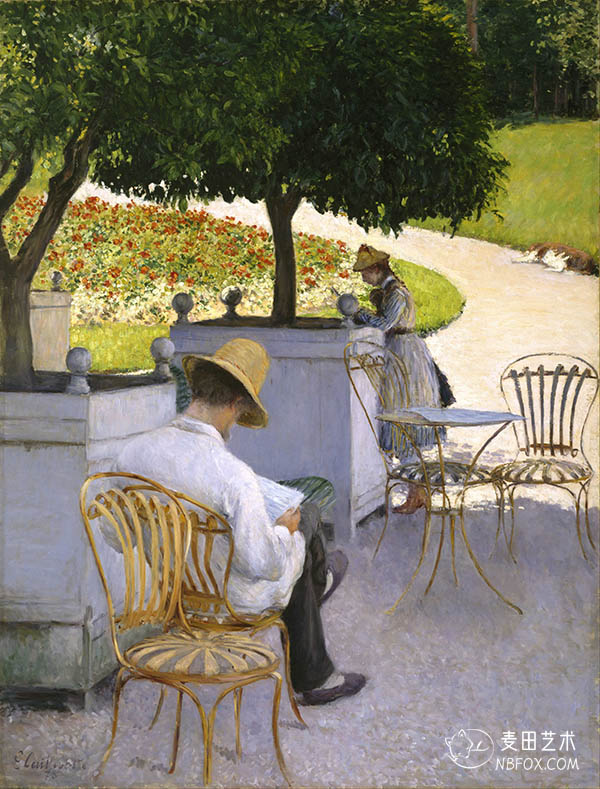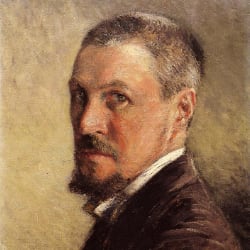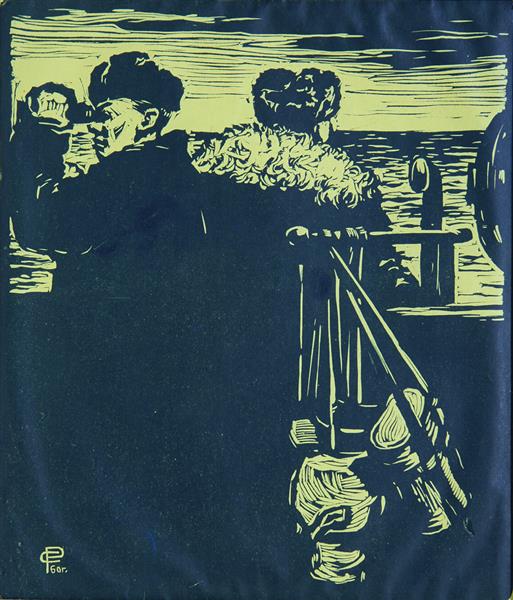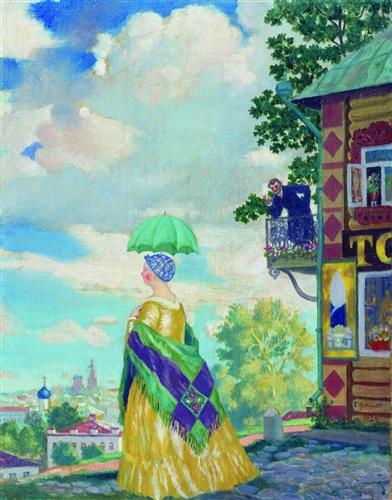图片尺寸:6433 × 8455 像素
作品名称:The Orange Trees or The Artist's Brother in His Garden
创作者:古斯塔夫·卡耶博特 Gustave Caillebotte
创作年代:1878
风格:印象派
体裁:风俗画
材质:布面油画
实际尺寸:w116.84 x h154.94 cm (unframed)
现位于:Museum of Fine Arts, Houston
版权信息: Public Domain(公有领域)
无水印高清图下载
图片尺寸:6433 × 8455 像素
图片大小:9.19 MB
图片格式:JPG
下载方式:百度网盘
下载地址:

作品介绍(机器翻译)
Les Orangers(英文名:The Orange Trees)是法国印象派画家古斯塔夫-卡耶博特的一幅油画。画布尺寸为155×117厘米(61英寸×46英寸)。这幅画由奥黛丽-琼斯-贝克获得,是长期借给休斯顿美术博物馆的收藏品的一部分,后来该收藏品于1999年捐赠给该博物馆。
卡耶博特与当时的其他印象派画家一样,对园艺情有独钟,是该运动最狂热的园艺家之一。他的许多同时代人更喜欢有机和野生的环境,而卡耶博特则喜欢修剪过的正式布置。他对他的果树进行了精心的修剪,以鼓励其紧凑生长。评论家们认为,这可能与他对透视的兴趣相一致。
卡耶博特于1878年在Yerres的家庭乡村庄园里,在户外画了这幅画。虽然印象派画家以在户外作画而闻名,但像这样用这种手法画的大画布并不多见,因为要在光线改变之前迅速创作出这样的大作品是很困难的。卡耶博特获得了这样一个例子,即克劳德-莫奈在当年3月创作的《Le Déjeuner》,它很可能影响了这件作品。
这幅画描绘了一个白天的场景。卡耶博特的弟弟马蒂亚尔正坐在橘子树的树荫下读书,背对着观众。他的穿着与雷诺阿《夏图的桨手》中古斯塔夫本人的穿着相同。他们的表妹佐伊-卡耶博特站在凡尔赛宫的一个浴盆旁,这个浴盆当时作为花园的花盆很流行,里面放着这些树。马蒂亚尔和佐伊的姿势表明,他们各自都在静静地享受下午的私人时光。前景中的轻质喷漆弹簧钢花园椅出现在耶鲁斯的其他作品中,在庄园的同时期照片中也可以看到。在背景中,明亮的阳光照亮了一个圆形的花坛,周围是一条弯曲的碎石路,在花坛的边缘,一只狗似乎正在睡觉。
卡耶博特在画面下部阴暗的前景和明亮的背景之间采用了鲜明的对比。阴影是用柔和的绿色和紫色画的,而草坪和花坛是明亮的绿色、红色和白色。阳光和阴影区域之间的强烈界定,与印象派画家雷诺阿和莫奈的类似户外场景中出现的斑驳光线不同。艺术史学家和评论家Kirk Varnedoe认为,这种对比有助于产生一种午后的热感。
作品介绍(原文)
Les Orangers (English title: The Orange Trees) is an oil painting by French impressionist Gustave Caillebotte. The canvas measures 155 by 117 centimetres (61 in × 46 in). It was acquired by Audrey Jones Beck and was part of a collection that was on a long-term loan to the Museum of Fine Arts, Houston, before the collection was donated to the museum in 1999. The painting now hangs in the museum building named for Beck.
Caillebotte, in common with other impressionist painters of the time, had an affinity for horticulture and was one of the movement's most avid gardeners. While many of his contemporaries preferred more organic and wild settings, Caillebotte preferred manicured, formal arrangements. He trained his fruit trees with careful pruning to encourage compact growth. Critics have suggested that this may have been in keeping with his interest in perspective.
Caillebotte painted this canvas en plein air at the family's country estate in Yerres in 1878. Although impressionist painters were known for painting outdoors, large canvases such as this, painted with this technique, were uncommon due to the difficulties in creating such a large work quickly, before the light changed. Caillebotte obtained one such example, Le Déjeuner by Claude Monet in March of that year, and it is likely to have influenced this work.
The image depicts a daytime scene. Caillebotte's brother Martial is reading while sitting in the shade of the orange trees with his back towards the viewer. He is dressed in the same way as Gustave himself in Renoir's Oarsmen at Chatou. Their cousin, Zoé Caillebotte, is standing at one of the Versailles tubs, then fashionable as garden planters, which contain the trees. The poses of Martial and Zoé suggest that they are each enjoying the afternoon quietly with their private thoughts. The lightweight painted sprung-steel garden chairs in the foreground appear in other works painted at Yerres, and can be seen in a contemporaneous photograph of the estate. In the background, the bright sunlight illuminates a circular flower bed surrounded by a curving gravel path, at the edge of which a dog appears to be sleeping.
Caillebotte employs sharp contrast between the shady foreground in the lower part of the image and the bright background. The shadows are painted in muted greens and purples, while the lawn and flower beds are brilliant greens, reds and whites. The strong definition between the areas of sunlight and shadow is a departure from the dappled light that occurs in similar outdoor scenes by Impressionists Renoir and Monet. Art historian and critic Kirk Varnedoe suggests that this contrast contributes to a sense of afternoon heat.(维基百科)





